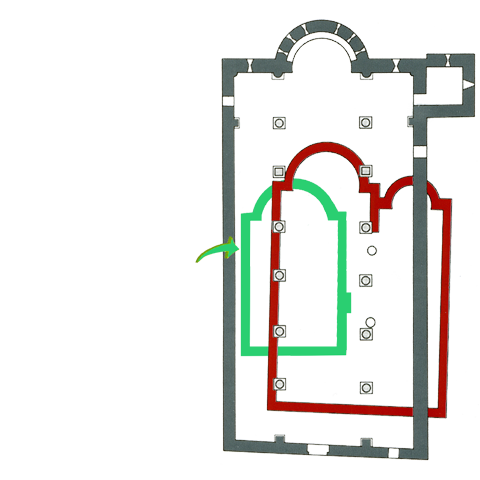THE PALEO-CHRISTIAN CHURCH
The influence of the new religion began to be felt in the important pagus in which Gropina was situated. The faithful needed not only to join together in one place to pray, to be baptized and to participate in religious celebrations: in fact, previously the inhabitants of the pagus, the pagani, met periodically also to discuss the problems of their community. The Christians maintained the same practice, and the people (plebs) began to gather in the ecclesia, the church. The Greek word ecclesia means assembly of the people, but from the 5th to the 6th century it started to stand for the religious structure itself. Before the 8th century, churches with baptismal fonts were called baptisteria, and only at the end of that century were rural churches with baptistries called plebes (pievi), to which, in the early middle ages, smaller churches and chapels were subordinated; in the later medieval period they were to be administered as parishes.
Before the fall of the Roman Empire (476 A.D.) Christianity had not yet taken root in the countryside, and in places such as Gropina. But already around that time, or at the latest in the next century, a small church with an apse and a single nave was built. Its dimensions were really tiny, approximately 13 meters by 7, but it was the first sign that the Christians wanted to join together to pray in a definite place, considering themselves an “assembly” (ecclesia). The little baptismal church of Gropina was built on the site of the Roman domus. It is still unknown to whom it was dedicated, but it might have been to St. Peter, like the present one, and like many churches of the early centuries of Christianity. No documentation about it has yet come to light, but the remains of its walls are preserved and are visible under the floor of the present pieve, found during the excavations of 1968-1971. There was no bell-tower until one was added, next to the pieve, in the period between the 9th and 10th centuries.

